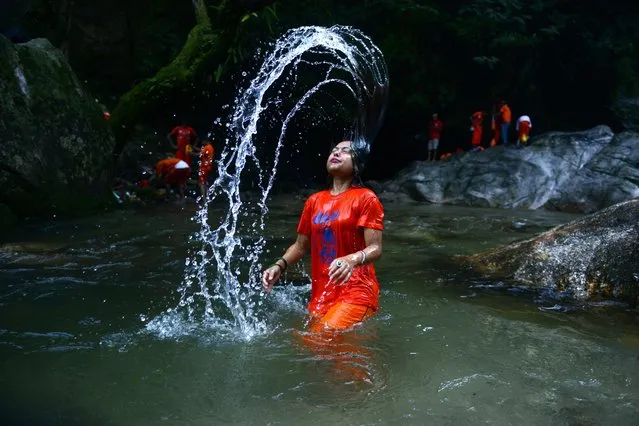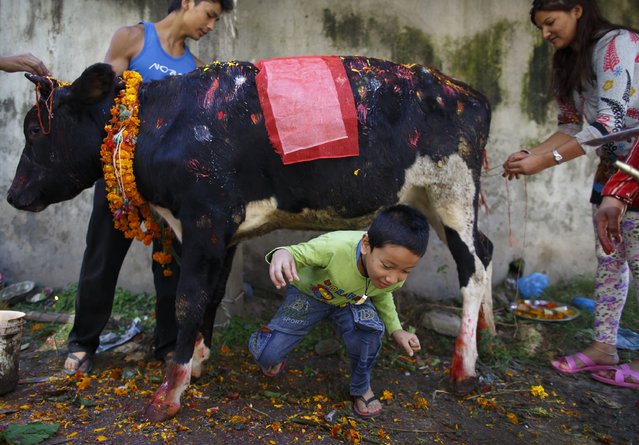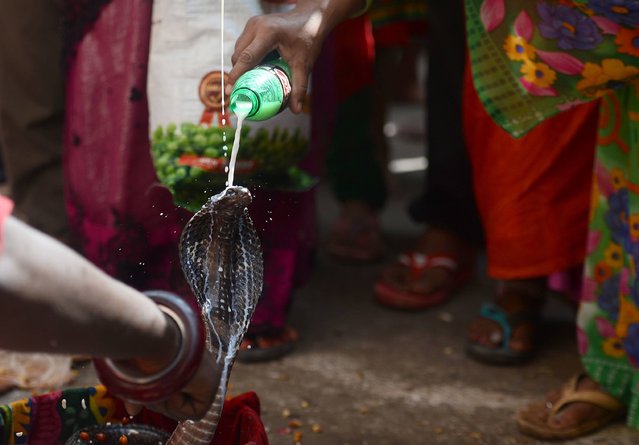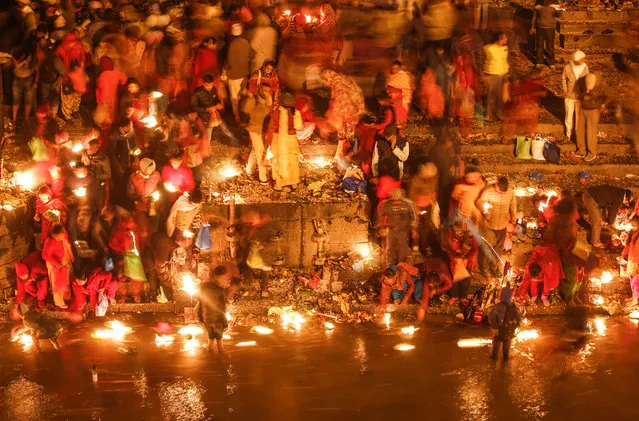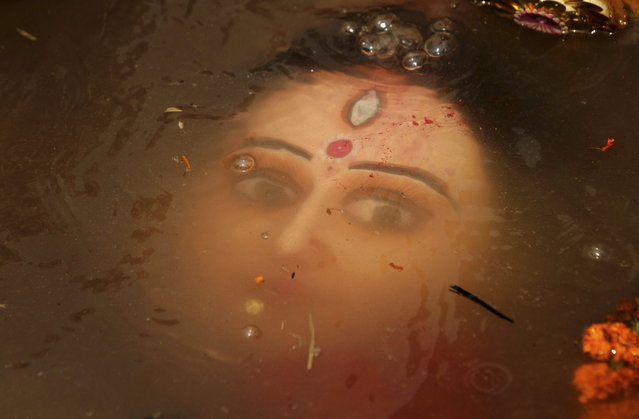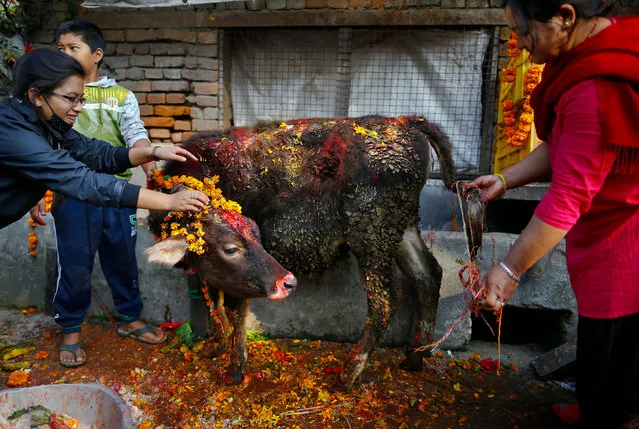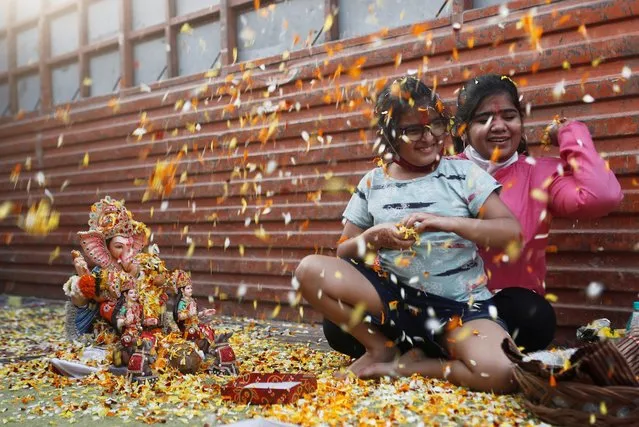
Devotees throw flower petals on an idol of the Hindu god Ganesh, the deity of prosperity, on the occasion of his birthday, celebrated as Magha Ganesh Jayanti, before immersing the idol into the Arabian sea, in Mumbai, India on February 16, 2021. (Photo by Francis Mascarenhas/Reuters)
22 Feb 2021 09:25:00,post received
0 comments

